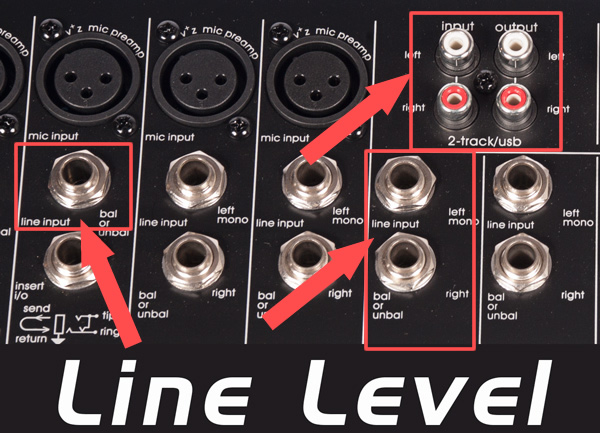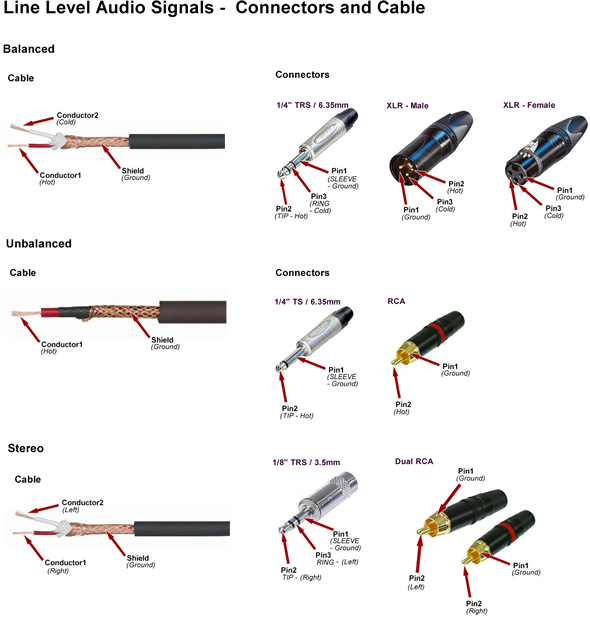Line Level Signals Explained
Posted: 13 September 2013
Comments: 0 [Post]
Synopsis: A line level signal is the standard audio signal level used for interconnecting different pieces of audio equipment. Line inputs are commonly found on mixing desks, usually under an XLR mic inputs, and the outputs of a mixer are always Line Level, ready t

The standardized signal level for transferring analog audio between devices is known as a line level signal. Line inputs and outputs are found on consumer devices such as TV's, DVD players and laptops. As well as pro audio gear such as mixing desks, audio interfaces and signal processors. Any line level output can be connected to any line input, therefore enabling any piece of equipment with line ins and outs to be connected.
 |
Line outputs have signal impedance ranging typically from 100ohm to 600ohm, while a line input has an impedance of 10,000ohm (10k ohm). The difference in impedance between the IN and OUT is what is used to drive the signal.
The way the line level signal works is similar to a Hi-Z signal, where a 10k ohm signal is outputted from an electric guitar to drive a 1M ohm (1,000,000 ohm) input on the guitar amp of effect pedal. It should be noted here, that when you plug your 10k guitar into a 10k line level input instead of a 1M Hi-Z input, you are causing the signal to be 'loaded down'. It will work but the signal and sound quality is far from optimal.
A line level can be said to sit in the middle of the signal strength spectrum of all analog audio signals. Signals produced by microphones and guitar pick ups are weaker, while headphone output signals and speaker signals are stronger.
There are actually two different standards for the line level signal, one being 'consumer' and rated at a nominal level of -10 dBV. The other being 'professional' and rated at a nominal level of +4 dBu. It is generally more expensive studio equipment that features the pro standard and some mixers and power amps will have options to switch between +4 dBu and -10 dBV. It is best to try and match the signal types between equipment if possible.
A line level signal can be carried through both a guitar lead or microphone cable, and there are generally no audio cables specifically marketed as 'line level cables'. Due to the nature of line level signals connecting between different pieces of equipment, often line cables are required with different connectors at either end, these can be referred to as link or patch cables. The 4 main connector types we see in line level audio, and in fact all of analog audio, are the 1/4" jack, 1/8" jack, RCA and XLR connector.
Lastly, a line level signal can either be balanced or unbalanced. Unbalanced line inputs and outputs are generally only the 1/8" and RCA plugs connections that you see. RCA plugs can only ever carry a mono, unbalanced signal. While 1/4" line jacks on pro audio gear are often TRS (tip, ring, sleeve) enabling them to accept and send a balanced signal. Also note that XLR inputs on a mixing desk are "mic level" inputs, however the XLR outputs (generally 2 of them) are always set to line level, ready for connection to a line input on a powered speaker, amplifier or processing device. XLR outputs are generally always balanced, whether mic or line level.
 |






